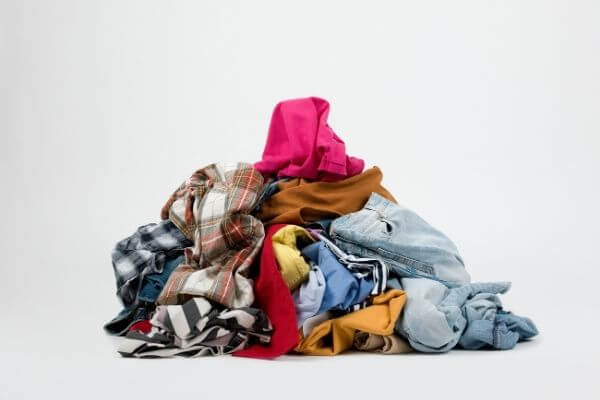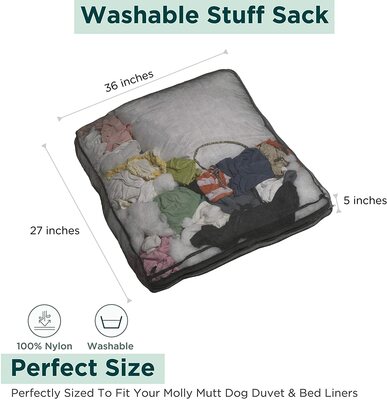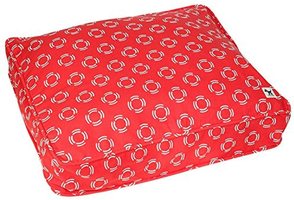Did you know that Americans throw out the equivalent of 80 pounds of clothes per person per year? That’s about 11 million tons just in the US. Almost 95% of this material can be reused or recycled, yet only 15% is currently recycled. Clothes recycling is essential to help reduce our impact on the earth.
As with all recycling, it can be difficult to figure out what to do with your old garments. We are here to help. Below we lay out the best options on how to recycle your clothes in order of the most sustainable. We also provide plenty of links to make it easy for you to find your nearest drop-off points.
Before you throw out all your old clothes, look at the options below and choose a more sustainable way to dispose of your old clothes.
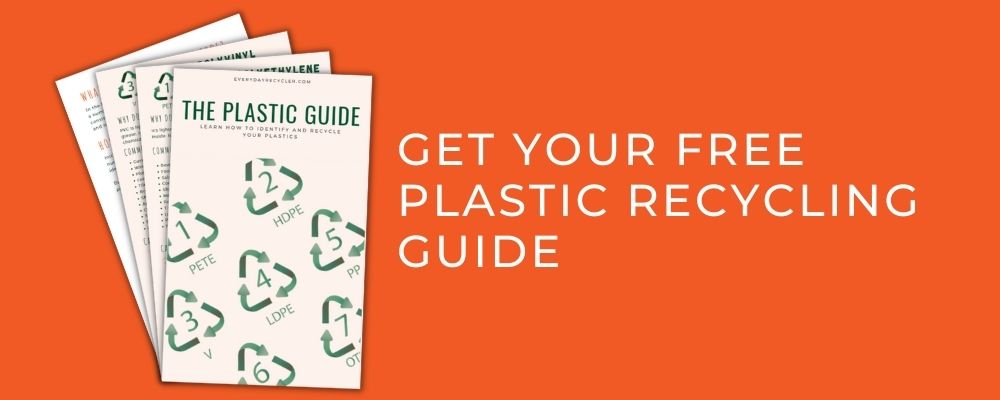
Quick Navigation
What’s the problem with clothing
Clothing is pretty essential to our lives. Most importantly, clothes cover and protect our bodies from heat, cold, and other weather conditions. Yet, there is more to it. You see, clothes are also an outward reflection of our personality. They can represent our culture, beliefs, personality, and position in society. Clothing might be used to impress, attract a partner, or show our creativity. It can even change how we feel about ourselves.
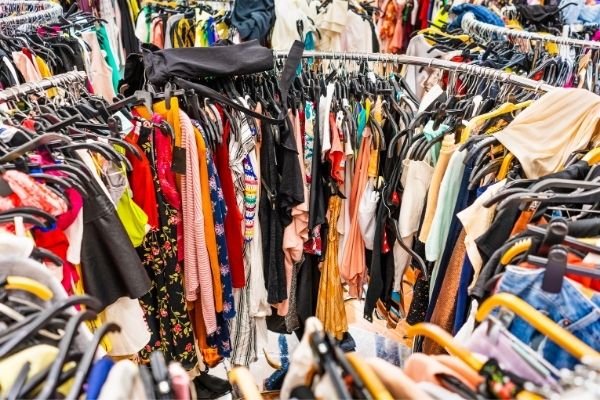
Our relationship with clothing has changed in the last two decades. Something called fast fashion has taken over. What does fast fashion mean? The Merriam-Webster Dictionary defines fast fashion as “an approach to the design, creation, and marketing of clothing fashions that emphasizes making fashion trends quickly and cheaply available to consumers.”
Fast fashion combines a short turnaround with cheaply made items. In a way, introducing this approach has resulted in greater accessibility for the masses. Although, in some ways, this is a positive outcome, it has gone a bit too far. Unfortunately, making fashion more accessible has led to many undesirable impacts. Fast fashion’s reliance on rapid production, low quality, and keeping costs low has meant there is no room for social or environmental welfare.
The environmental and human rights impacts are a topic for another post; here, we want to look at the waste produced by the fast turnaround of fashion.
A significant outcome of the shift to fast fashion is that we don’t keep items for very long. The result is that we throw more clothes away than ever before. The amount of clothes Americans throw away has doubled in the last 20 years, from 7 million tons to 14 million tons.
It’s not much different around the world. Overall the world throws away 2.1 billion tons of fashion and textiles every year. (Fashionopolis) We are throwing away more not just because we are buying more but because we’re keeping them for a lot less time.
Why should you recycle your old clothes?
Recycling clothes instead of sending them straight to landfill is an excellent way to help. Recycling clothes can have some significant benefits overall. Did you realize that:
- Clothes or textiles are one of the fastest-growing waste streams.
- Most clothes contain plastic. They can take hundreds of years to break down in landfill, just like water bottles, and can contaminate the environment with dyes and chemicals.
- Clothes have a large carbon footprint, even before you throw them out.
- Waste generated from clothes is equivalent to 2.1 billion tons a year worldwide.
- Only 15% of clothing is estimated to be recycled, leaving 85% of apparel not currently recycled.
- One garbage truck of clothes is burned or sent to landfill every second.
How can we improve things?
The first step is to start implementing some new behaviors and embrace slow fashion but more about that later. Taking responsibility for the clothes we want to dispose of is a good start. Recycling clothes has many benefits, like using existing materials and reducing our reliance on natural resources like oil, water, and energy.
There are many steps in the process. First raw materials are transported to the manufacturer. The yarn or fabric is transported to the garment factory, and the item must be transported to the retail store and finally to the customer. It is a long journey, and each step has its own impact.
Through the reuse of existing materials, recycling can reduce the need for raw resources like the production of cotton or the extraction of oil. This results in significant reductions in energy use. Clothes recycling can even reduce the impact on animals and the environment, e.g., by using less virgin wool, we can reduce the demand for farm animals.
Below are some options for disposing of the clothes you no longer want.
How can you recycle your old clothes?
There are three steps you should look into when disposing of your old clothes. The first step is to do your best to find a new home for your unwanted items. Effort and energy have gone into making the garments, so the first step is to try and make sure the item is used again and again.
The second step is to use the fabric or materials by upcycling or creating something new from the fabric. Then finally, once all the options for reuse and upcycling are exhausted, recycling is the final step.
Reuse
You can sell or donate garments that are in good condition so they can be reused. There are many options for Reselling like eBay, Etsy, markets, Facebook marketplace, garage sales, or swap meets. Or you can try a consignment store that will sell the item for you.
Donate clothes that are in good condition to a local charity or thrift store. Please make sure you check what they accept before dropping off anything. If an item is completely worn out, be considerate and recycle it yourself rather than leaving it up to the charity to sort it out. If you are not sure, then have a chat with them, and you can ask what they do with any unwanted clothing.
Our article Reduce reuse recycle. Ways to get you thinking. It might give you some more ideas.
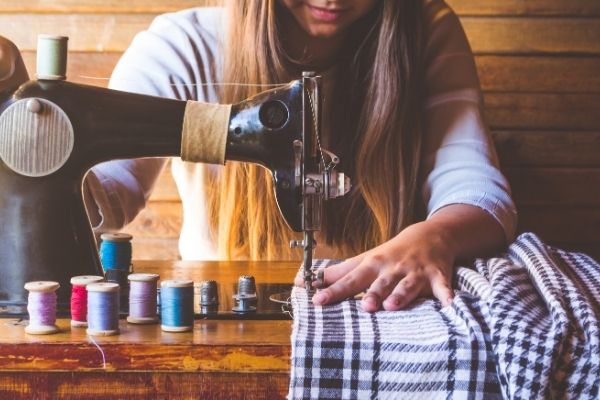
Upcycle
Look for other ways to reuse your clothes. If you are good at sewing, there are plenty of ideas for upcycling old garments into something new. Check online for inspiration. If the item is not easily upcycled and too worn for donation, then you can use it as a rag in the garage, or why not cut it up and use it as cloths for cleaning.
Another great idea is to use old clothes to fill your dog’s bed. Molly Mutt sells empty covers so you can fill them yourself. Not only are you reusing your clothes, but when you need to wash your dog’s bed, you can take them out and wash them separately, its much easier than you can with a large cushion. Plus, they can possibly help if your dog suffers from anxiety because the clothing carries your scent.
Check our more recycled dog products in our article Our Favourite Brands Making Recycled Dog Products.

Recycle
Any clothing that is no longer acceptable for reuse or even upcycling can be recycled. There are a few options for recycling your old clothes, depending on where you live. It is important to remember that your old clothes do not belong in your curbside recycling bin. They will cause contamination and can be a safety issue at the recycling facilities.
Clothes recycling can use textiles in many different ways. They can be converted into rags to be used by industries. A lot of companies use rags in the day-to-day operations of their business. There is a rag trade business that meets this need.
Recycled clothes can also be processed into fibers. This material is used to create stuffing for furniture, in fiberglass, as insulation, or in carpets.
Second-Hand Sales Sites
Here are some seller sites or second-hand clothing sites.
- ThredUP
- Poshmark
- Varage Sale
- eBay
- Etsy
- The RealReal
- Tradesy
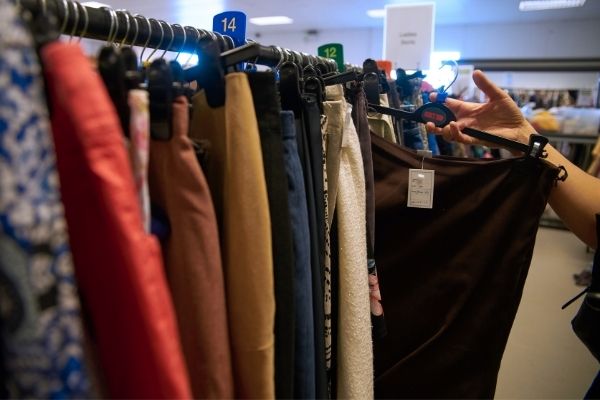
Store Drop offs
Many stores provide take-back programs or clothing drop-off points. Many of these will accept any brand like Swedish Stocking or H&M, while others will only accept their own brand. Check before you drop off anything to be sure they take it.
Be sure to check your local area for other community-organized drop-off events or textiles collections.
Companies with take-back programs:
- Patagonia
- Swedish Stockings
- The North Face
- MadeWell
- Marks and Spencer
- H&M
- Knickey Underwear brand
- Zara
- American Eagle Outfitters
- Levis
Reuse/Recycling Locations
Below are various locations or locators to help you find your nearest textiles or clothes recycling service.
United States
- American Textile Recycling Service
- Smart (Secondary Materials and Recycled Textiles Association) locator
- Donation Town helping you find a charity to donate with free pickup
- Council for Textile Clothing locator
- #WearNext – Make Fashion Circular by the Ellen MacArthur Foundation
- refashionNYC collection service for old clothes and other fabric items for NYC residents, businesses, schools and nonprofits.
- donateNYC provides New Yorkers with tools to make donating and finding second-hand clothes, shoes, accessories, and textiles easy.
- TerraCycles Fabrics and Clothing boxes – If you are a business and would like to set up a clothing bin for your customers.
- RecycleNow locater
- You can check Earth911 recycling locator
United Kingdom
Australia and New Zealand
- Upparel – you can purchase a donation pickup, and they will give you a voucher in return.
- Donate to your local Charity Store
- Salvation Army
- Red Cross
- St Vincent de Paul Society
- Habitat for Humanity
- City Mission
Check with your local council.
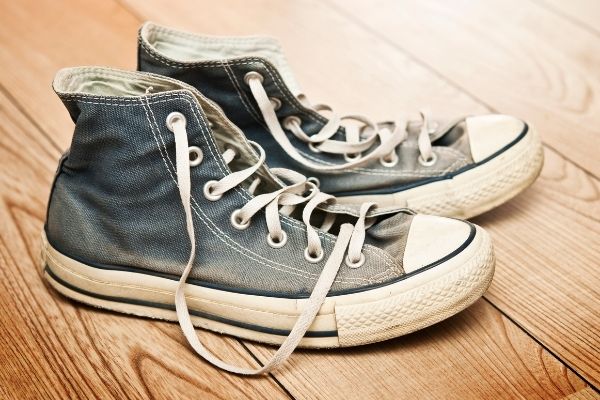
If you want to know where to recycle your old shoes, then head to our article What To Do With Old Shoes.
Changing behaviors
This problem is not going away in a hurry. In fact, it is still growing. We are going to need everyone’s help.
It’s predicted that fast fashion will continue to grow. By 2030 the world will buy 63% more fashion, that’s 102 million tonnes a year. If we continue with only 15% recycled, that will mean almost 87 million tons of clothing discarded in a year. It’s time to start changing our ways.
Here are a few ideas to get you thinking:
Reduce
- Wear what you have
- Use accessories to update an outfit
- Shop your wardrobe
- Organize your wardrobe so you can find what you already have
- Organize a clothes swap party with friends and family
- Rent your clothes
- Plan your shopping trip to avoid impulse buys
- Look after your clothes so they will last longer
- Get your clothes repaired
Read this article, Minimalist Closet: Practice Minimalism with Your Wardrobe, if you want to discover more sustainable clothing options.
Rethink
- Think before you buy
- Buy second hand
- Buy Recycled fabrics
- Look for quality items
In 2018 the average number of garments bought in a year per person in America was 68. That is more than 1 item a week. Simply by buying reducing your buying to only one new thing every fortnight, you can halve your impact. Why not try every month or even take a break for a year.
Buy local – A poll in 2016 suggested that when given a choice between buying a $50 pair of pants made offshore or an $85 pair manufactured in the US, 67% of respondents said they would go for the cheaper pair.
Buy Recycled
Another great way to help change things for the better is to buy clothing made from recycled or upcycled fabrics. There are many companies making products out of recycled fabrics or fabrics leftover from fast fashion.
You can learn more about these in our recycled fabrics series:
- Recycled Fabric: The Ultimate Guide to Innovative and Sustainable Recycled Fabrics
- Is Nylon Plastic? Sustainable Guide to Nylon and Recycled Nylon Fabric
- What Is Polyester? | Easy Beginners Guide To Recycled Polyester Fabric
- Why Should We Use Recycled Cotton Fabric? | Easy Guide To Sustainable Fashion
- 6 Sustainable Fabrics Made From Food Waste | Eco-Friendly Fashion Guide

Sources
- Merriam Webster dictionary
- Audrey Stanton, 2018, Low Quality And Even Lower Costs
- Morgan McFall-Johnsen , 2019, The fashion industry emits more carbon than international flights and maritime shipping combined. Here are the biggest ways it impacts the planet.
- How to reduce, reuse and recycle your unwanted clothing
- https://textilerecyclingquotes.com/atlanta-textile-recycling/
- Elizabeth Reichart and Deborah Drew, 2019, By the Numbers: The Economic, Social and Environmental Impacts of “Fast Fashion”


